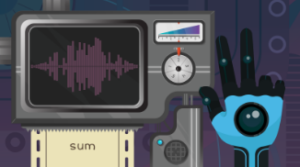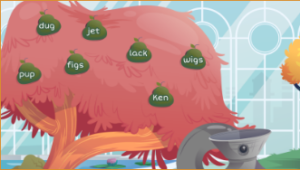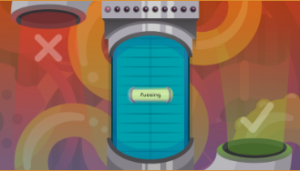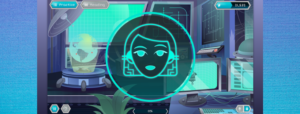Our Interactive Online Games Get Even Better!
Written by Sandie Barrie Blackley, Speech-Language Pathologist
Published on March 4, 2020
You may have noticed that we recently made some dramatic improvements to the Lexercise practice platform, with new games that enable students to practice the concepts they learn during each weekly lesson. Of course, the quickest way to see these improvements is to try the online demos. But we thought we would let Rob Morris offer a little background.
What is New in Lexercise’s Games?
Now you might think that the Chief Technology Officer would respond to the “What’s new?” question with a lot of tech-speak. Not Rob. With his combination of techno-wizardry and big-picture understanding, he talks about the Lexercise platform with passion and pride. Here’s what he told us:
“When Sandie Barrie Blackley and Chad Myers started envisioning Lexercise nearly 15 years ago, there was always one guiding principle: the platform would be research-based and science-driven. They recognized that there was inadequate structured, deliberate practice built into most dyslexia treatment programs. The child would see the therapist, practice during the session, and that would be it until the next session.
 “But MRI research and neuroscience was confirming practice a few days a week was not enough for the dyslexic brain. Remediation is a process of re-patterning the brain with very specific input – breaking down words into bits, teaching and practicing patterns, and providing specifically targeted examples and micro-challenges over and over to recruit the parts of the brain that are not currently being used efficiently for reading.
“But MRI research and neuroscience was confirming practice a few days a week was not enough for the dyslexic brain. Remediation is a process of re-patterning the brain with very specific input – breaking down words into bits, teaching and practicing patterns, and providing specifically targeted examples and micro-challenges over and over to recruit the parts of the brain that are not currently being used efficiently for reading.
“That’s what our games do, and that helps explain why Lexercise works as well as it does. Language literacy is enormously complex. These games allow us to supplement what’s learned in instructional lessons, taking tiny pieces of language and building them, one on the next, creating fluent, confident readers.
“When I came on board, the games were working, but there were limitations to the technology. For example, they were based on Flash, which wasn’t up to the job for a variety of reasons. So we started to plan changes that would allow Lexercise to have the power and flexibility it requires.
 “That’s an ambitious project. The games need to appeal to a broad range of users and cover a broad range of skills, plus they need to offer students, parents, and therapists measurable results. Originally, it seemed like the target audience was beginning readers – first-graders. But over time, we’ve learned that it usually isn’t until grade 4, 5, or even 6, that parents, teachers, and school districts finally agree that a child is struggling to read and that the child needs testing and help.
“That’s an ambitious project. The games need to appeal to a broad range of users and cover a broad range of skills, plus they need to offer students, parents, and therapists measurable results. Originally, it seemed like the target audience was beginning readers – first-graders. But over time, we’ve learned that it usually isn’t until grade 4, 5, or even 6, that parents, teachers, and school districts finally agree that a child is struggling to read and that the child needs testing and help.
“In addition to adjusting our graphics and vocabulary to appeal to a slightly older audience, the last decade has seen a revolution in the use of technology. Kids are exposed to very sophisticated graphics from the time they start watching television, playing games, and looking at phones. Our platform had to step up to that level of sophistication, while still meeting the research and science standards.
 “What Lexercise is doing now is fairly cutting edge. Each game reinforces a lesson concept or a specific skill and each of our new games keeps track of what the student is working on and how well they’re doing it. That generates useful, actionable data for therapists, parents, and educators.
“What Lexercise is doing now is fairly cutting edge. Each game reinforces a lesson concept or a specific skill and each of our new games keeps track of what the student is working on and how well they’re doing it. That generates useful, actionable data for therapists, parents, and educators.
“The look of the games is new, too. Our fabulous graphic artist, Iszzy, developed the color palette and the graphic design of the games. The games have to be engaging, rich, and animated, but they also have to be attentive to various constraints. Students with dyslexia may also have attention, focus, and sensory issues, so the graphics can’t be overstimulating or overwhelming. They have to strike a balance between exciting, interesting, and of course educational.
 “In the game design, we’ve also incorporated what we’ve learned from Lexercise therapists. For example, therapists told us that breathing exercises in their live sessions help reduce anxiety. So we built an optional breathing-break ‘game’, called Calming Breath, into the practice.
“In the game design, we’ve also incorporated what we’ve learned from Lexercise therapists. For example, therapists told us that breathing exercises in their live sessions help reduce anxiety. So we built an optional breathing-break ‘game’, called Calming Breath, into the practice.
“The games work with the Lexercise Structured Literacy Curriculum©, which is a speech-to-print approach to word-study, structured from simple to complex in a series of lessons. The curriculum and the teaching and practice tools are continuously reviewed for scientific accuracy and effectiveness and refined with feedback from kids, parents, and therapists. The beauty of the new Lexercise platform is that the games “know” what concept the child is being challenged on and how they perform, while at the same time providing the child with feedback and a sense of control and mastery.
 “We went live with the new games late in 2019 and the demos are now online. You’ll notice that each game has a ‘bot’ who guides the user through the game. That’s Anna. We named her in honor of educator and psychologist Anna Gillingham, co-founder of the Orton-Gillingham Approach. In the actual games (not the demos), Anna personalizes her language and instructions so they are age-appropriate. We have more games in the pipeline. They’ll just keep getting better.”
“We went live with the new games late in 2019 and the demos are now online. You’ll notice that each game has a ‘bot’ who guides the user through the game. That’s Anna. We named her in honor of educator and psychologist Anna Gillingham, co-founder of the Orton-Gillingham Approach. In the actual games (not the demos), Anna personalizes her language and instructions so they are age-appropriate. We have more games in the pipeline. They’ll just keep getting better.”
We’d love to hear from you. Please try out the demos and contact us at any time with questions about dyslexia, language learning, or Lexercise.
Improve Your Child’s Reading
Learn more about Lexercise today.
Schedule a FREE
15-minute consultation



